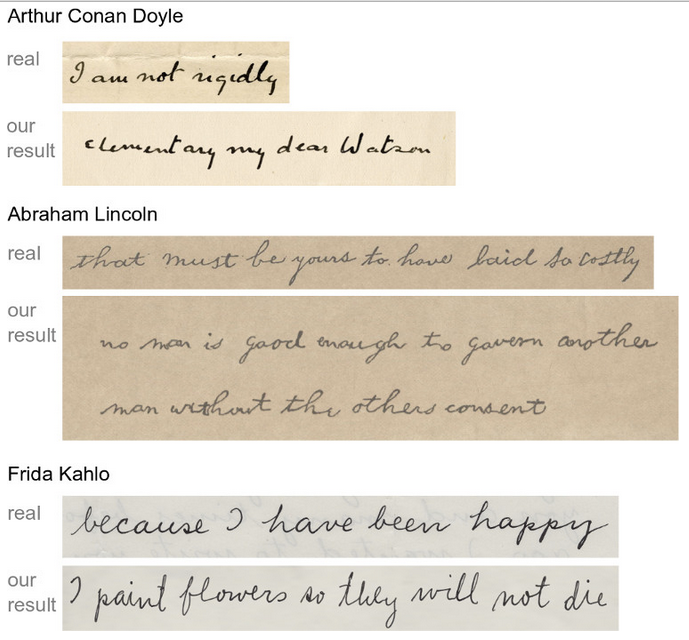This Algorithm Lets You “Write” Like the Greats
Your words, their handwriting
/https://tf-cmsv2-smithsonianmag-media.s3.amazonaws.com/filer/bc/94/bc94239d-9d8c-4c9c-9723-e29a458752b6/5537339774_38cf6ee15a_o.jpg)
Do you drool over new fonts and spend hours wishing you could develop cursive that’s as charismatic as the handwriting of your favorite historical figures? If so, listen up. It just got easier to plagiarize your idols produce modern-day text in the handwriting of long-dead figures with the introduction of a computer algorithm that can spit out your favorite author’s handwriting.
It’s called “My Text In Your Handwriting,” and, as the BBC’s Rory Cellan-Jones reports, it can turn just about anyone’s handwriting into computer-generated text.
The tool is the brainchild of a team of visual computing researchers from the University College London. They’ve developed a custom algorithm that scans words on a piece of paper and then spits out text in that handwriting style on the screen. But it's more than a font: Rather than creating a single style that can be repeated, the algorithm learns the tics and unique twists of an individual person’s handwriting with the help of a program that marks up letters and punctuation marks. The algorithm can learn from a single small scrap of handwriting, though the more text used, the better.
When Haines met with the researchers, they had the program “learn” his handwriting and spit out a fairly convincing duplicate. They also did it with the writing of various historical figures, like Frida Kahlo and Sir Arthur Conan Doyle, with plausible results. (Spoiler alert: Doyle never wrote the sentence they used as their sample.)

The process isn’t perfect—when challenged to spot the fakes, subjects did so 60 percent of the time. And it becomes less reliable for languages like Chinese with extremely large numbers of potential characters. Though the program could theoretically make it easier to do things like forge historical documents or notes to unwitting teachers, the team told Cellan-Jones that the computer-generated text can still be distinguished from the real thing with the help of a microscope.
But what’s the point? In the paper that describes the algorithm, researchers say that the technology could one day be used to preserve the handwriting of people whose ability to write was damaged by a stroke or perhaps to make greeting cards on gifts and bouquets delivered by florists and other services more convincing.
Business use aside, it’s just plain cool to think of a world in which the personal “fingerprint” of our handwriting could be preserved—or used—forever. Even better, the researchers will soon be sharing their code. Let the copying—er, machine-generated handwriting imitation—begin.
/https://tf-cmsv2-smithsonianmag-media.s3.amazonaws.com/accounts/headshot/erin.png)
/https://tf-cmsv2-smithsonianmag-media.s3.amazonaws.com/accounts/headshot/erin.png)